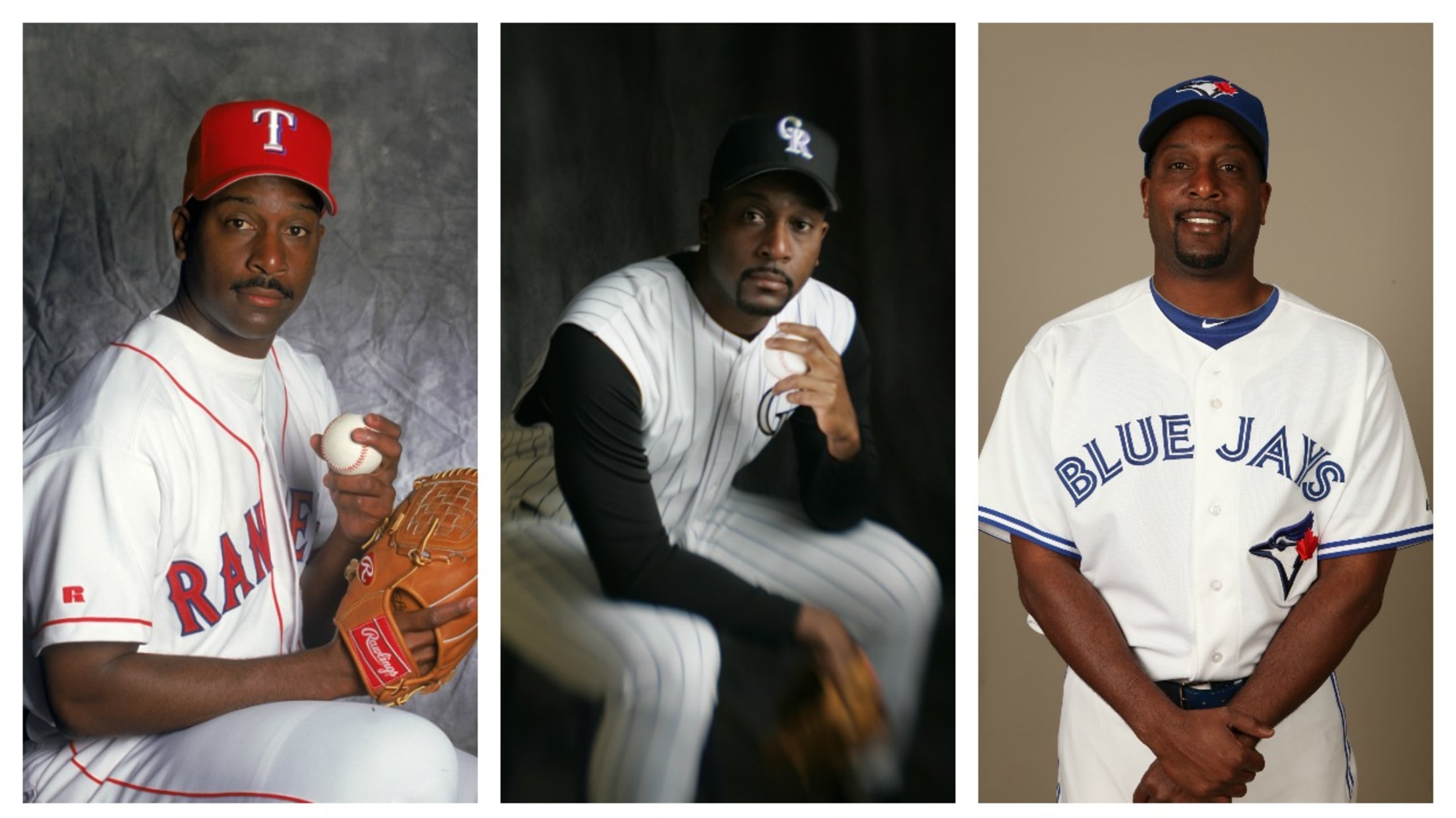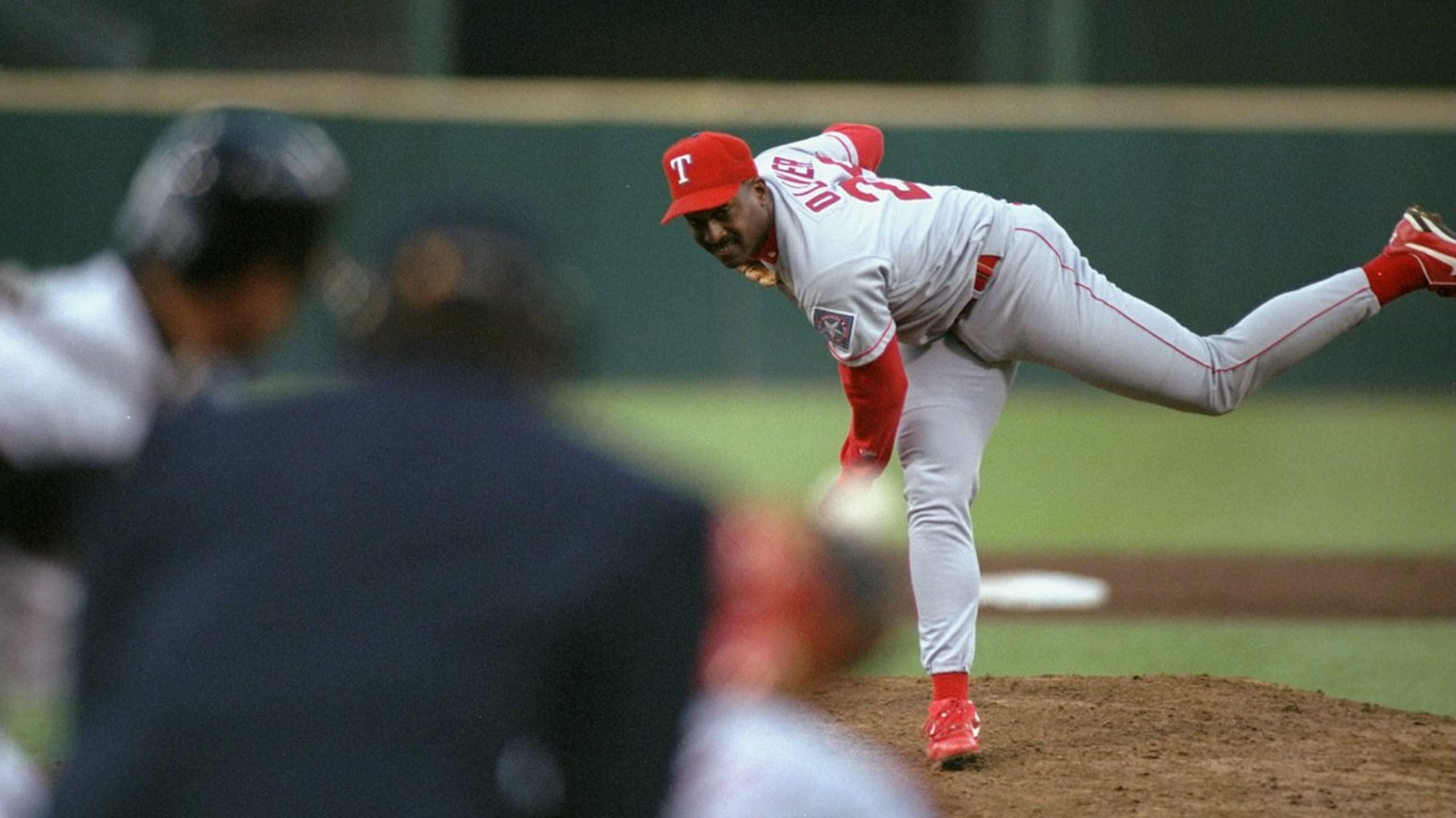Darren Oliver was baseball's Forrest Gump, and he belongs in the Hall of Fame

It's one of baseball's most timeless questions: What, exactly, makes a player a Hall of Famer? Is it a rock-solid statistical resume? Singular excellence at any one aspect of the game? A transcendent peak? Someone who just felt like a star whenever they took the field?
Everybody has their own answer, which is why we're seemingly doomed to yell at each other about it year after year until the heat death of the universe. But fear not, for I am here to bring order to this chaos: All of the above answers are wrong, actually.
The Hall of Fame, after all, isn't just the Hall of Fame; it's the National Baseball Hall of Fame and Museum. Its expressed purpose is to preserve the game and its history -- to tell the story of baseball, and to pass that story on to successive generations. And so, given that purpose, isn't it only right for Cooperstown to welcome a player without whom that story is incomplete? A man who spanned generations, who has his fingerprints on baseball history large and small, like our very own Forrest Gump. I'm talking, of course, about Rightful Hall of Famer Darren Oliver.

You probably think of Oliver as a journeyman out of central casting, but his on-field resume is a lot more interesting than that. From 1996 to 1999, he was a full-time starter, pitching to a perfectly respectable 103 ERA+. Here he is in 1998, blanking a Red Sox team that finished third in baseball in runs scored:
Oliver began to struggle as the years went on, though, and in 2005, he found himself out of baseball entirely, having failed to catch on with a big league team that spring. It looked like his story had been written, a solid if unremarkable stint in the big leagues.
Until, at age 35, he didn't just resurrect his career -- he totally reinvented himself. Oliver carved out a role in the Mets bullpen, even spinning six scoreless relief innings in Game 3 of the 2006 NLCS. That began a run as one of the most dependable relievers in baseball: From 2007 to his retirement in 2013, Oliver posted a 2.86 ERA over 427 2/3 innings.
But Oliver's case for the Hall is about so much more than mere numbers on a page. It's about his place in the history of the game, and what it would be without him.
He's a second generation big leaguer
Bob Oliver was an outfielder and first baseman who spent parts of eight seasons in the Majors. His best year came with the Royals in 1970, when he hit 27 homers, drove in 99 runs, received some down-ballot votes for AL MVP ... and, that October, welcomed a son named Darren into the world.
While we can neither confirm nor deny Darren's prenatal ability to turn his father into an All-Star, what we do know is that the Olivers now stand in exclusive company, joining the likes of the Boones and the Alomars in the annals of great father-son baseball duos. (Another fun fact: Both Bob and Darren spent time as Nolan Ryan's teammate -- the former with the Angels from 1972-74, the latter in 1993 during Ryan's final season with the Rangers.)
He pitched forever
OK, fine, not forever, but 20 years is still an extremely long time! The following is an inexhaustive list of things that had yet to be invented when Oliver made his big league debut on Sept. 1, 1993: The European Union, the Dallas Stars, Netscape Navigator and Justin Bieber. An entire generation of baseball fans grew up never conceiving of a world in which Darren Oliver was not a Major League pitcher -- and yet we would ask them to make their pilgrimage to Cooperstown without any indication that he'd ever existed.
But Oliver didn't just play for a really, really long time. He racked up plenty of frequenty-flier miles, too: The lefty played for nine teams over the course of his career, tied for the fourth-most in baseball history. Think about how wide of a net that casts -- players from Ryan to Mark McGwire to

All of which is to say that Oliver's career is basically a baseball history book. Michael Jordan's stab at a professional baseball career? It began in Spring Training 1994, with an at-bat with the White Sox again ... Darren Oliver. Listen to how Sports Illustrated describes his overpowering stuff:
[H]is first official opposing pitch to Michael Jordan was a fastball low, ball one. His second pitch was a fastball that Jordan swung at and tipped. Another fastball, another swing...nothing but air. Jordan swung at the fourth fastball, and, befitting a great basketball player, he hit a dribbler down the first base line.
Interleague play? MLB's first regular-season matchup between AL and NL took place on June 12, 1997, as the Giants traveled to Arlington to take on ... Darren Oliver and the Rangers. OK, so he gave up a leadoff single, but he also went 7 2/3 strong innings!
But what about McGwire and Sammy Sosa's run at Roger Maris' single-season home run mark in the summer of 1998? Don't worry, Oliver was there to capture that, too: Big Mac hit dinger No. 61, tying the record, on Sept. 9 ... in support of Cardinals starter Darren Oliver, who got the win that day.
What do arguably the three most significant baseball stories of the 1990s have in common? Darren Oliver, that's what. Remove him from the equation, and a whole decade falls apart -- how can we expect millennials to embrace Cooperstown if it doesn't acknowledge one of the keystones of their adolescence?
But don't take my word for it. Just look at the ovation that Blue Jays fans gave Oliver after making his final appearance with the team back in 2013. Clearly they grasped the historic significance of what they were watching. Whether we can say the same thing about Hall voters remains to be seen.





